Kung Fu
Basics
Over the last four decades our system has taken the traditional and classical aspects of Shaolin Kung Fu 少林功夫and applied a modern approach to martial arts training and practice. Shaolin Gaocan Mun Nam Pai Chuan Kung Fu is a broad-based martial art where students will get a taste of the authentic forms, weapons and animal styles familiar to Shaolin. General Kung Fu practice also features;
- Stance work– for balance, stability and power generation
- Striking– with the hands, feet, knees and elbows
- Blocking– with the arms, legs and body
- Chin Na– gripping, seizing and locking
- Shuai Jiao– throws and trips
- Kun Sut– footwork and movement principles
- Chi Gung– internal breathing exercises
- Sparring– sparring and controlled combat
Our Kung Fu is steeped in tradition and culture while keeping combat application fresh, along with many other aspects of our Art and organisation. We have a saying of ‘Traditional training, modern methods’ which demonstrates this sentiment – a traditional, classical Shaolin base paired with a modern, systemic approach to practice and application.
Our students learn in a classroom environment where we teach Kung Fu through;
- A formalised syllabus
- Padwork and paired application
- Empty hand, weapon and animal forms
- Chi Gung breathing science
- Sparring and Sanda training
There is no limit to how Kung Fu is learned.
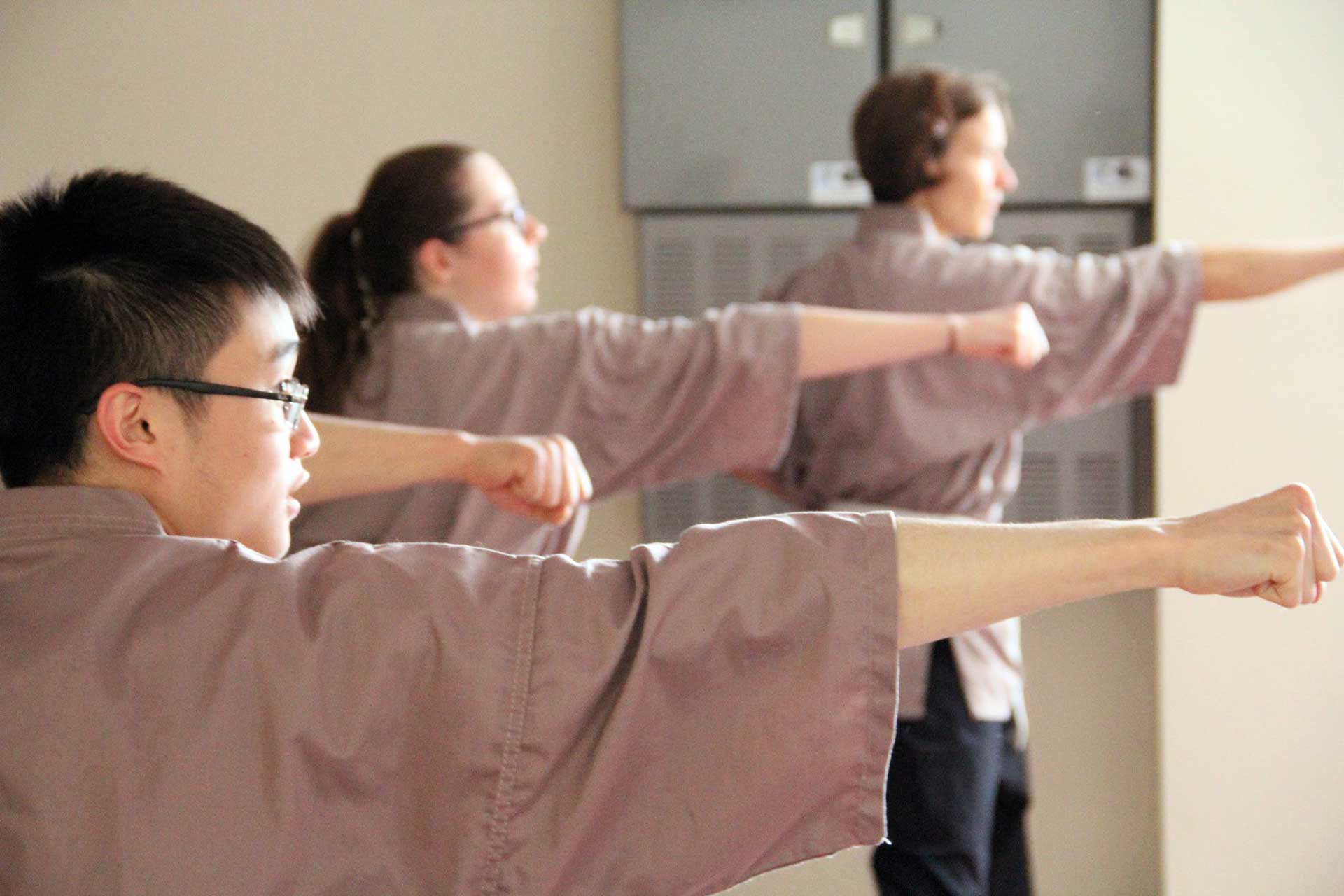
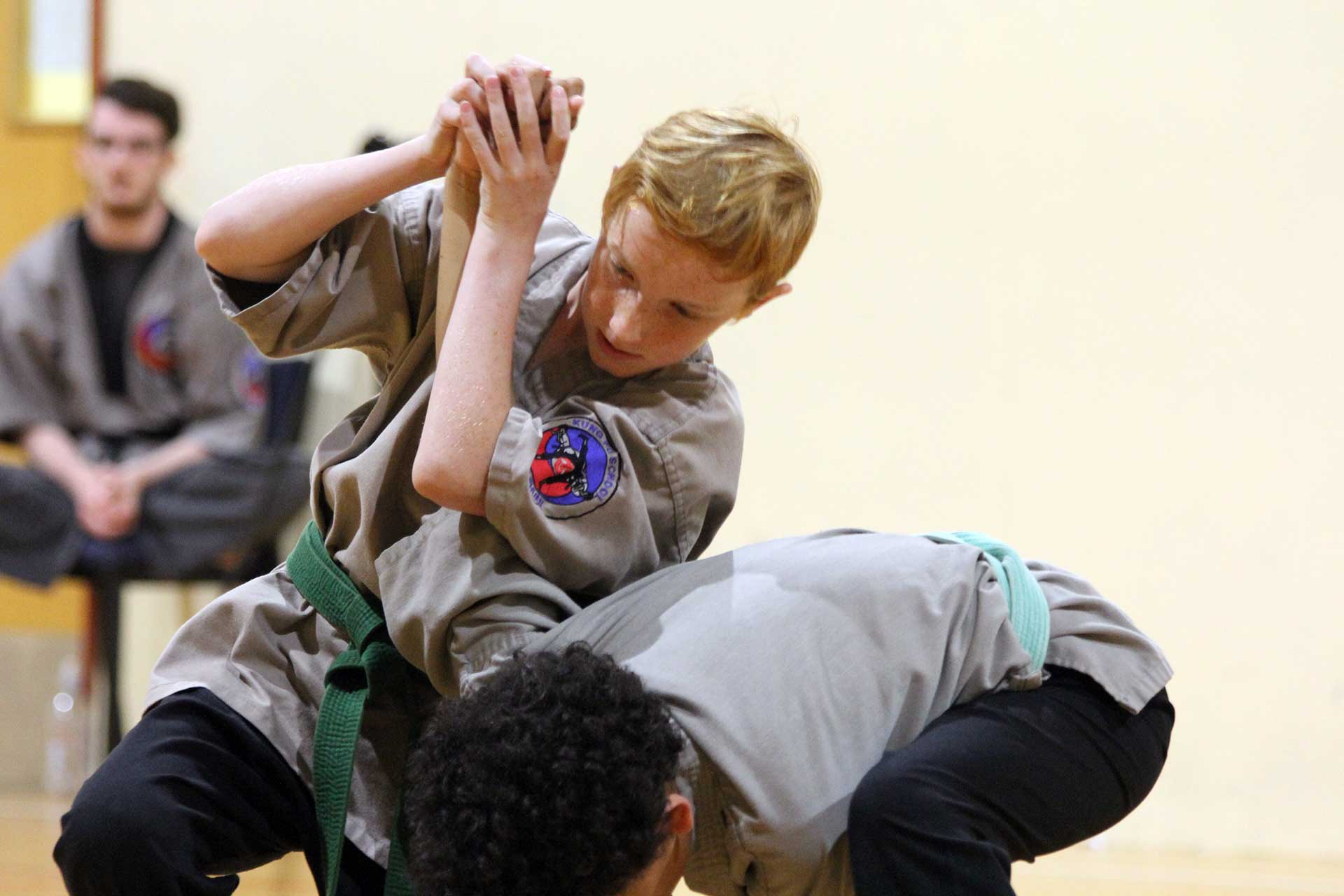
Syllabus
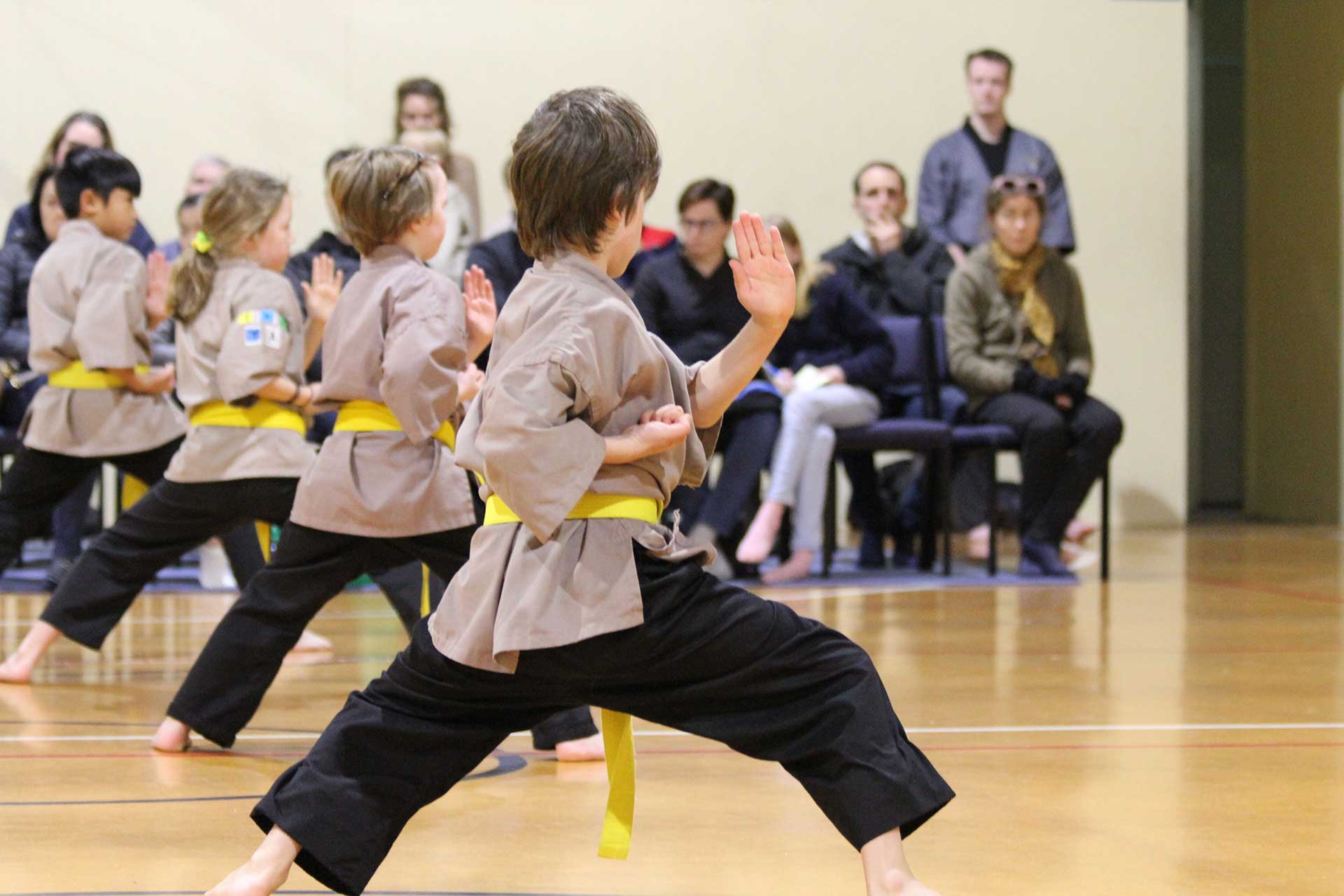

To help students master basic Kung Fu techniques properly and to continuously improve, we use a training syllabus.
Our students start their training by learning not to rely on physical strength, but technique. The syllabus covers 9 junior syllabus grades from white belt through to black belt, as well as 9 senior black belt grades. Each grade has requirements covering a range of techniques and classical forms.
We begin by teaching them how to punch and kick effectively, how to use footwork and blocking to evade an attack, and how to use short-range techniques such as joint locks and throws. Stance work is essential at all stages of practice and is regularly trained and refined.
Classical Shaolin forms are also part of the syllabus, and students are required to continuously apply the principles contained in these forms.
Grading examinations are held to assess students’ progression. There is a different coloured belt for each junior grade, and these are issued as a formal indication of a student’s level of skill and knowledge.
After passing a grading, students are expected to regularly attend training sessions and practice what they have learned to maintain the standard that they have reached. The focus of the syllabus is to develop the technical base of students, not to use it as a ladder of rank gathering.
Pad work
And Application
Our training regime heavily features application and paired work with training pads. Like with many other martial arts and combat sports, the use of striking pads develops a student’s technique with consideration of power, impact and speed. We take the classical Kung Fu techniques, drill them alone and use training equipment such as bags, mitts and pads.
Shaolin Kung Fu use a broad use of striking techniques such as punching with the fist, striking and blocking with the forearms and elbows, kicking with the foot and striking and blocking with the shin and knees. The classical animal forms use exotic hand formations to strike with, including the fore knuckles, fingers and backs of the wrists.
The training syllabus put these techniques together in a series of paired and empty hand combinations. Many of these combinations and more can be practiced on pads, improving striking speed, power and accuracy.
Applications and striking sequences can also be used bare hand, where practice of blocking and making contact with the limbs is a standard part of practice. This combination work also utilises the seizing, grabbing, grappling and throwing techniques utilised in Chinese martial arts. This is either done with pads or bare hand with a partner.
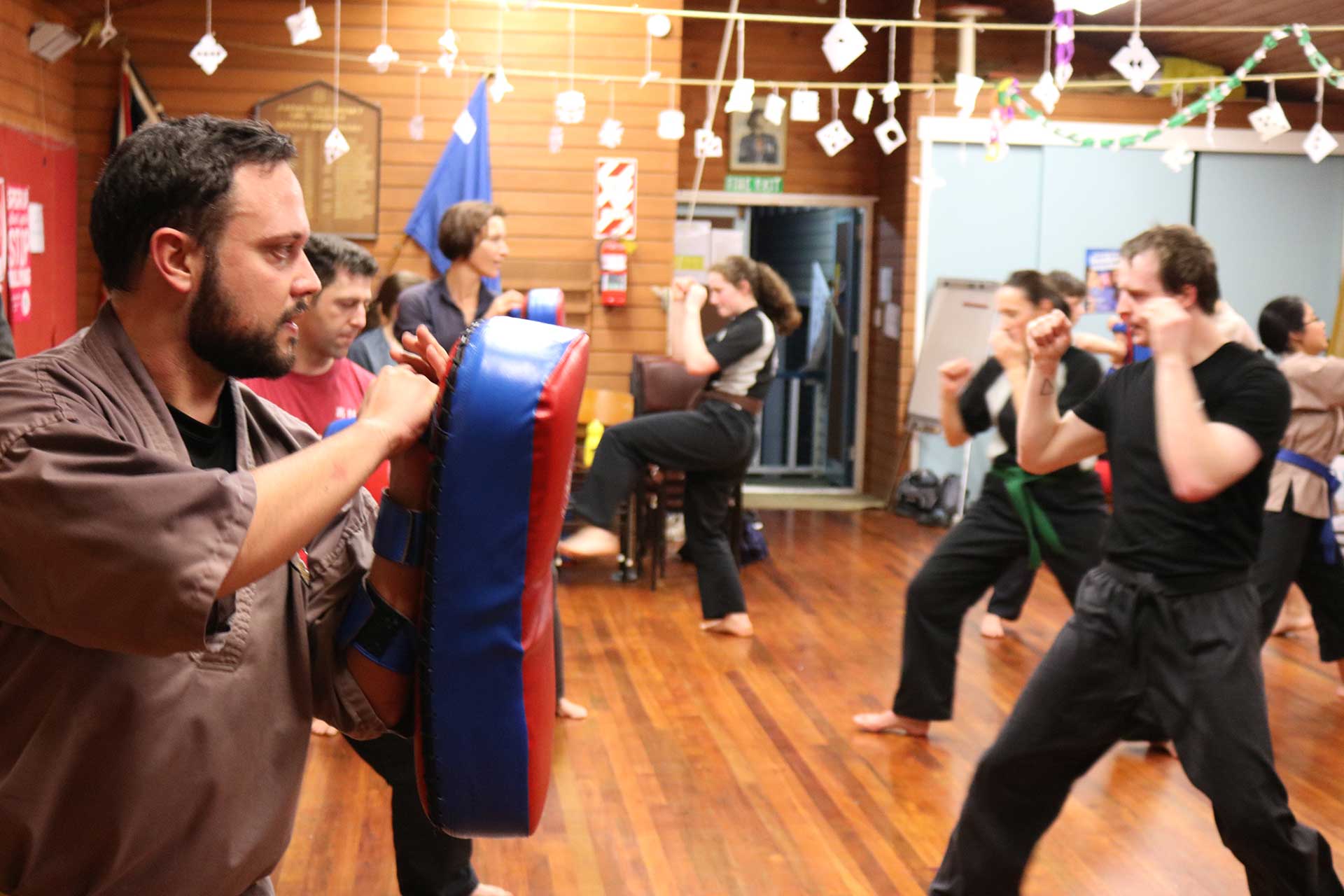
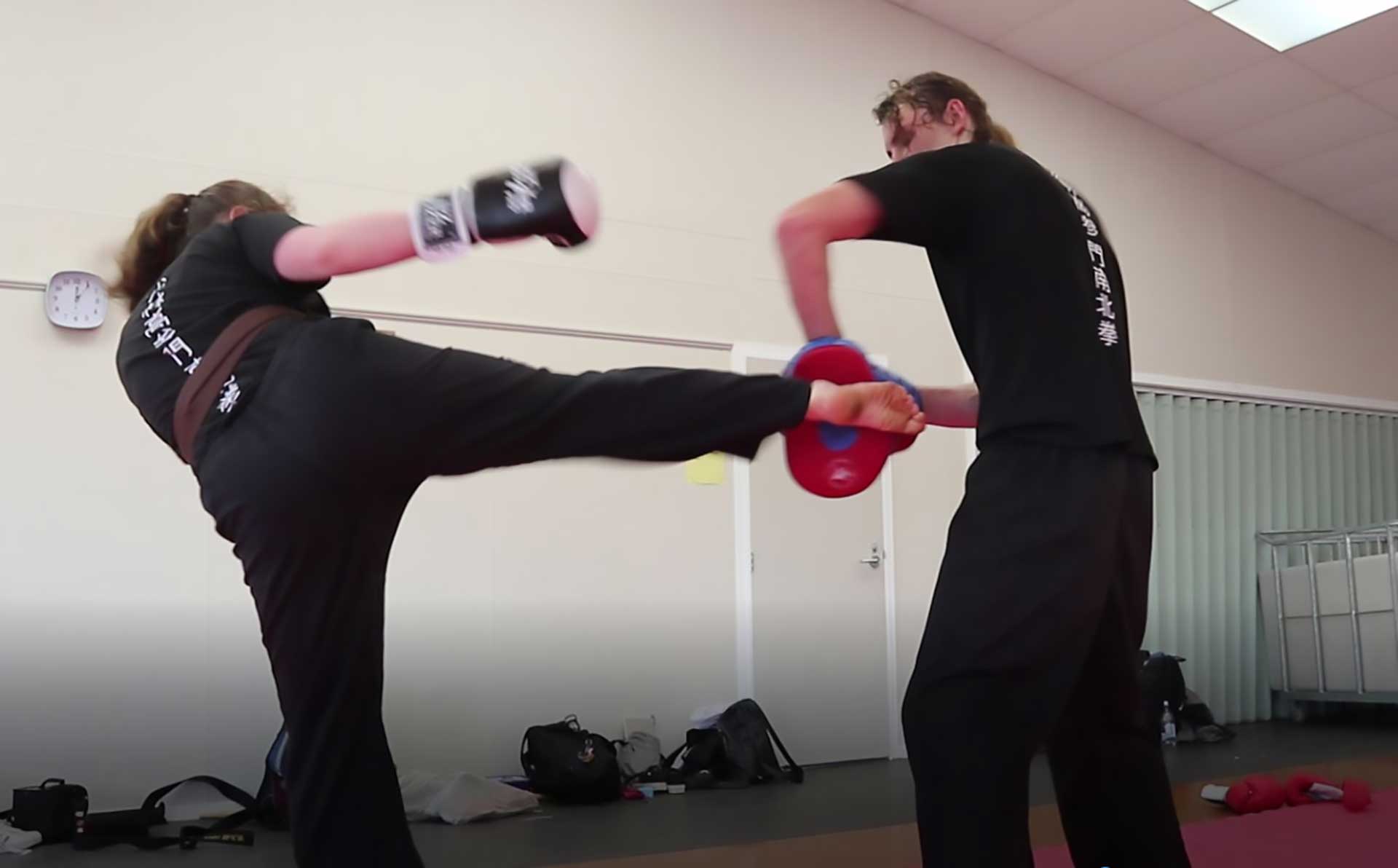
Empty Hand Forms
The foundation of traditional training
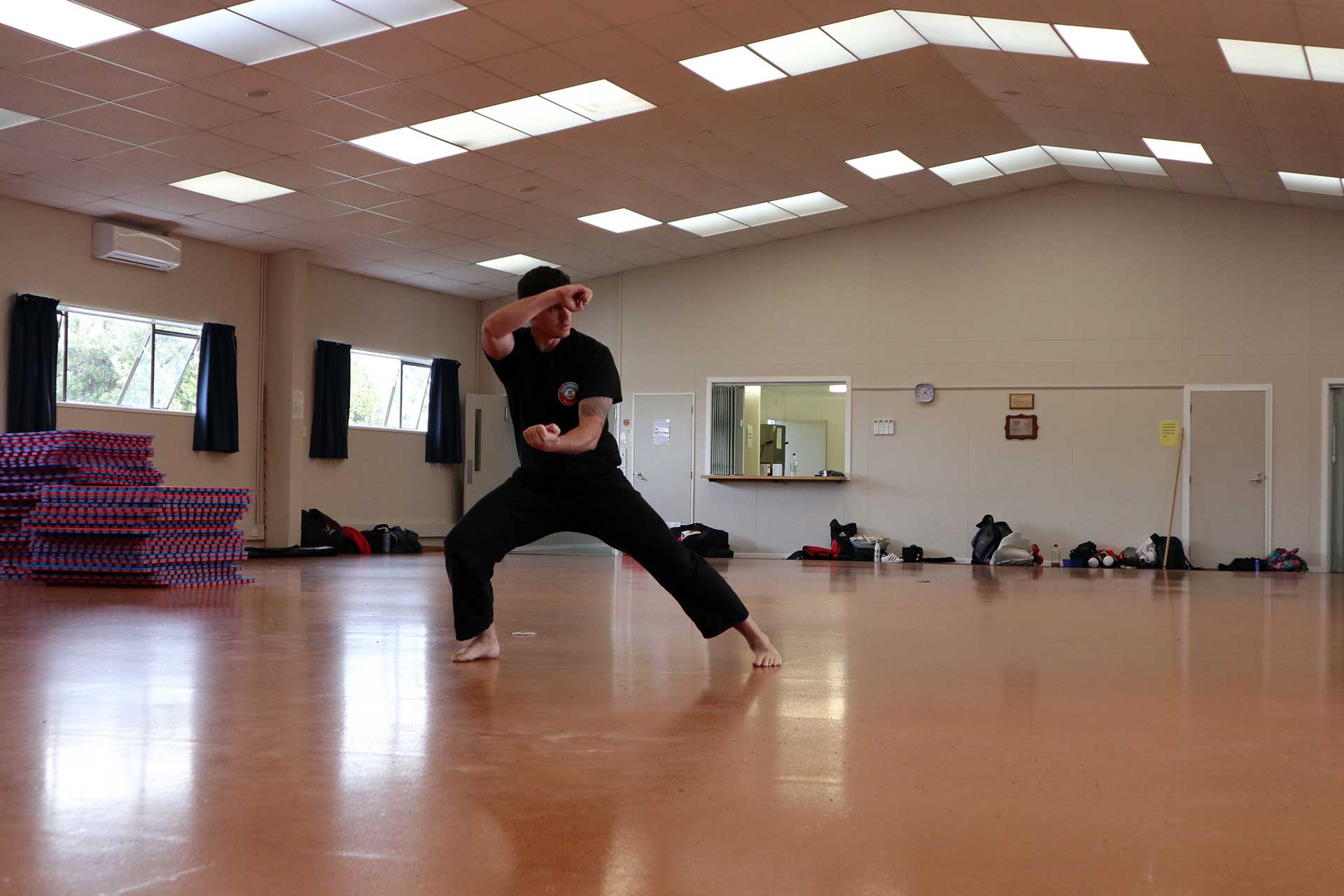
Forms are sequences of pre-arranged techniques that are performed with a specific type of energy and pace. Forms are the foundation of traditional martial arts and contain classical techniques and applications that form the characteristic or ‘style’ of the martial art.
In years gone using forms were practiced developing stamina, coordination and movement but also to teach fighting and self-defence techniques. Other types of forms also have an animal imitation element or incorporate chi gung breathing elements.
From a fighting perspective this is something not too dissimilar from modern day shadow boxing. The forms are usually drilled alone, though there are also partnered forms which add a timing and distance dynamic.
Our forms incorporate multi angle as well as multi-level application which helps foster a better understanding of “flow” and “centre”. The student will take the classical movements and technique and apply them to a practical manner.
We have many empty hand and weapon forms that are unique to our Shaolin tradition. These include forms in the Lohan or Plum Blossom boxing style or animal imitation forms.
Beginners start with shorter forms to build the base required to learn the longer and more difficult classical forms.
Weapon Training
and Forms
Once students have learned to master basic empty techniques, they are taught how to use different types of weapons of various length and complexity. The foundation weapons include the long staff, spear, and broadsword. There are many different weapons that use blunt bludgeoning strikes, or sharp weapons that incorporate stabbing or slashing techniques.
Shaolin Kung Fu feature a range of sharp, blunt, solid, chained, short and long weapons. Each weapon has a different complexity of use which develops the student’s awareness of distance, space and coordination.
The weapons that we practice include but are not limited to; the staff, broadsword, straight sword, steel fan, dagger, spear, trident, three sectional staff, butterfly knives, halberd, twin swords, tiger hook swords and more.
The staff is the grandfather of all weapons and is a signature weapon of our art. The staff was the monk’s weapon as it could generate a lot of force without cutting the skin. This is the very first weapon a student will learn and it will vastly improve the hand eye co-ordination of the practitioner.
Typically, there are multiple forms of each weapon which provides another perspective of its application in a combat setting.
Although many are centuries old, all have modern equivalents and by learning how to use them students develop control and technique that can be transferred to modern-day situations.
Animal Styles
and Forms
The monks at the Shaolin Temple used to watch the way animals would fight. From watching these animals, the monks devised moves and techniques into various fighting skills. These techniques were placed into forms with the student learning how to move and fight in the manner of that animal.
The animal forms are widely recognised as an aspect of Shaolin Kung Fu, with many animal forms and styles developed over the centuries. When practicing animal styles, there is a heightened element of emotion and character that the student must employ in order to perform the style correctly.
Our animal forms are also practiced with one of the five traditional elements, adding another layer of character and a different application of energy and pace.
There are animal techniques in a lot of standard empty hand forms, but also whole forms dedicated to an animal and an element.
We practice animal styles that you may be familiar with such as such as the Tiger, Crane, Snake, Monkey, Dragon, Leopard and Eagle.
There are a use of unique hand formations striking with the fore knuckles with leopard fist, back of the wrist with monkey fist, the single index fore knuckle with phoenix eye, or fingertips with snake and crane strikes. There are also different gripping techniques with the tiger, dragon, or eagle claw.
Due to the complexity of these forms they are usually taught closer to black belt, however, introduction to animal techniques will occur sooner.
We teach seven main animal styles which have their own sub-school within the system which is taught at the higher grades.
Chi Gung
Breathing Science
Chi-gung are practices used to relieve stress, improve concentration, strengthen and nourish internal organs and to teach you how to channel your body’s own energy, its chi, into a movement or part of your body.
Chi is a core concept in traditional Chinese martial arts and Tradition Chinese medicine. The understanding and application of Chi is broad and varied, however it has been around for thousands of years. Chi-gung practice has been around for just as long and helps improve strength and functionality of internal organs.
Chi-gung breathing exercises incorporate postural positioning which are either static or in movement, breathing techniques which use the lower diaphragm and mental focus. The practice of Chi-gung can be done with different focuses, whether to improve our martial arts practice, for recreational use or for health and curative effects.
Chi-gung is used throughout our classes and students can delve deeper into the practice as they see fit. The use of the practice was an important part of body hardening that produced the ‘Iron palm’ of masters such as Master Quek. Iron palm training would give the practitioner the means to break hard objects such as rocks and marble with their bare hands.
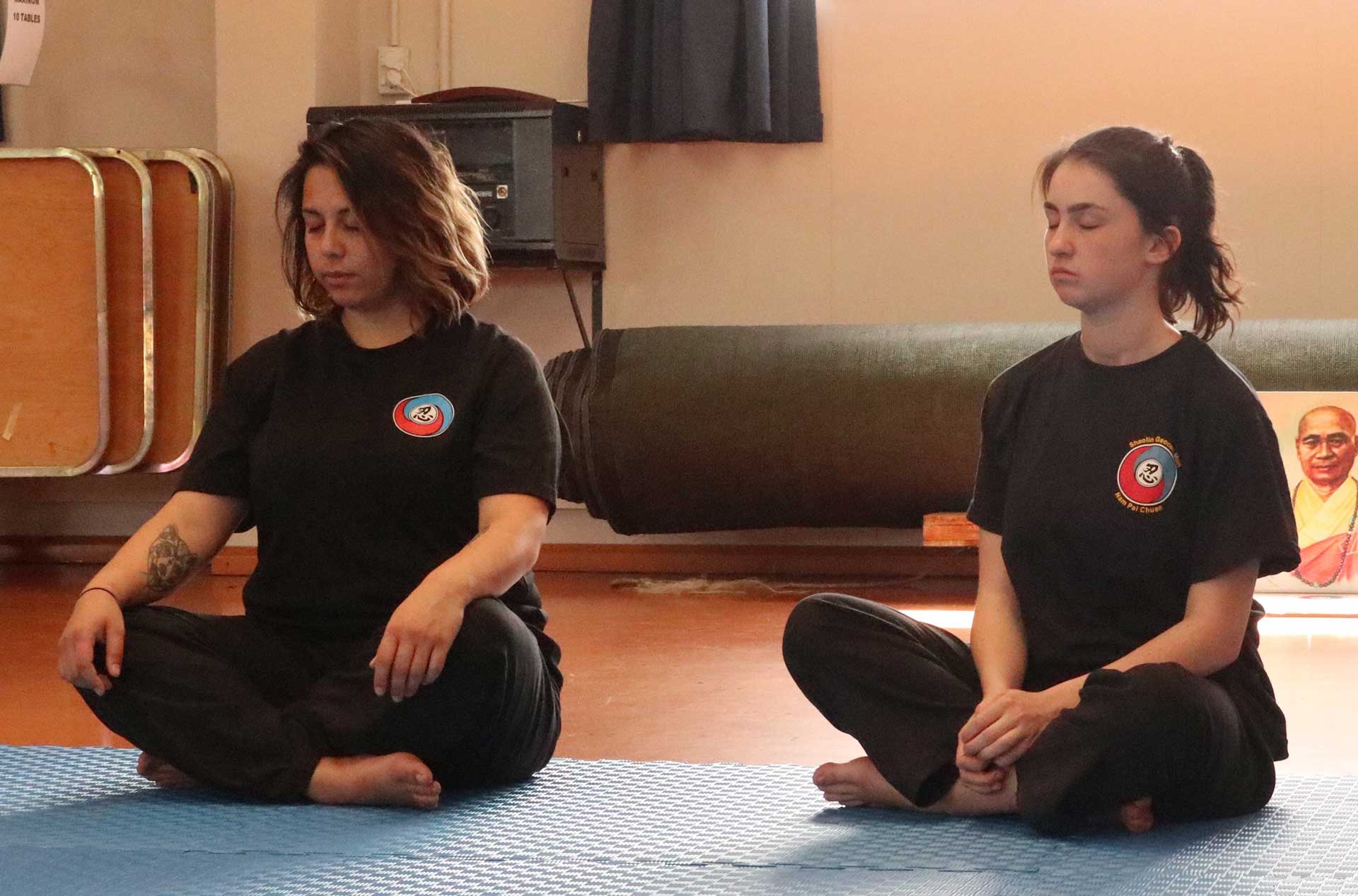

Sanda 散打 Training
and Sparring
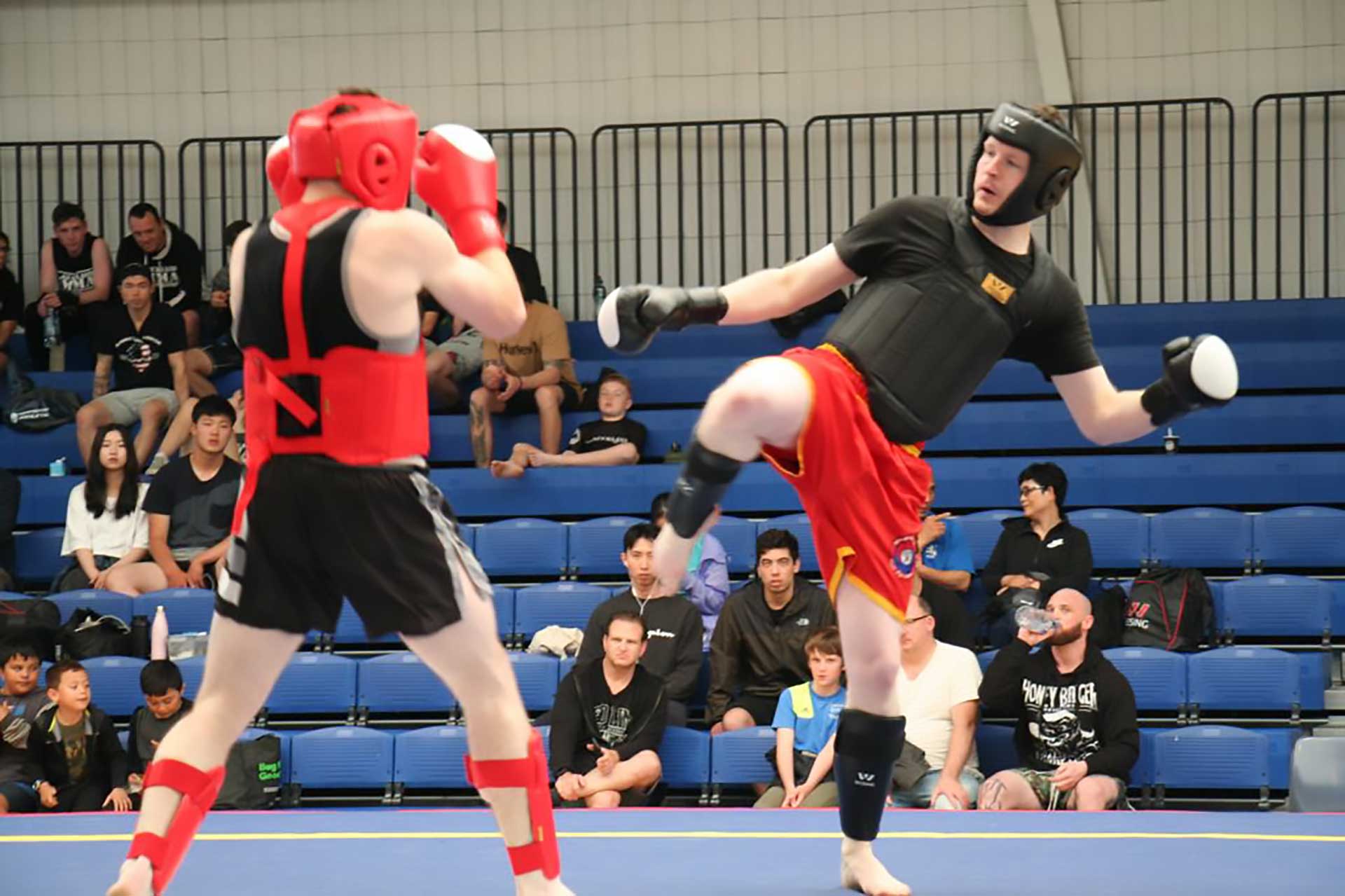
All martial artists must have sparring experience in order to apply the techniques they learn in a reactive environment or under pressure. Sparring also gives the student a better understanding of utilisation of power as well as the importance of mental focus. Sparring practice in the class is controlled with a limited rule set. The different rule set provides various levels of combat, which means different levels of contact and skill.
Students learn fighting techniques and movement through forms and pad work. They learn to respond to attacks through paired application and pre-set technique work.
The next level of combat comes from sparring, with rule set limitations that change as the student progresses through the grades or develops further.
Our students can also develop their fighting skill set through sparring competition or through Sanda.
Sanda is a form of competitive Chinese kickboxing that uses the striking disciplines like kick boxing but also incorporate throws, takedowns and trips. It is a high-paced striking centred combat sport with various levels of contact depending on the competitor.
We train our students in Sanda, with many choosing to compete at the New Zealand Kung Fu Wushu Federation tournaments.

